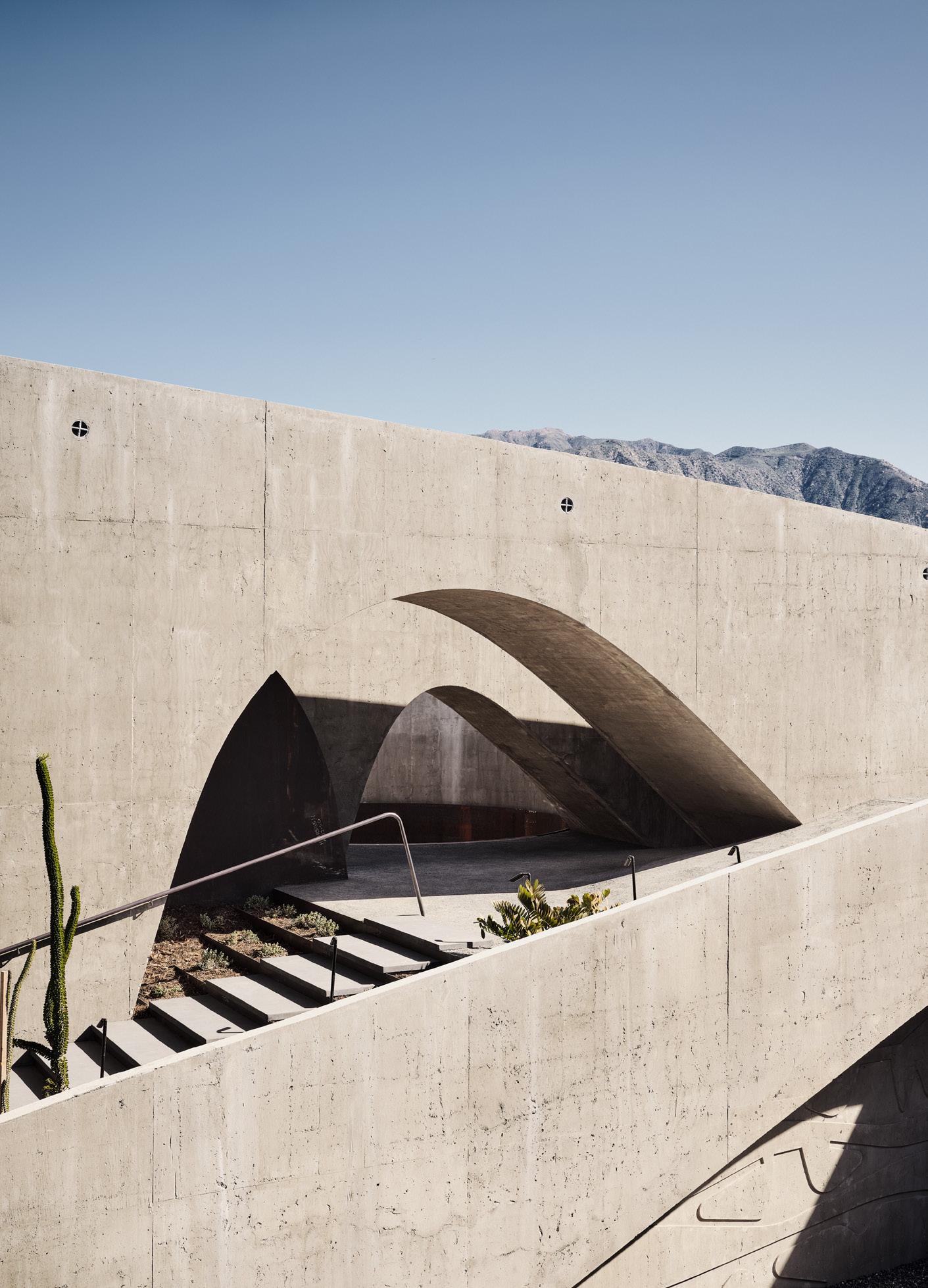Physical Address
304 North Cardinal St.
Dorchester Center, MA 02124
Physical Address
304 North Cardinal St.
Dorchester Center, MA 02124

In the new book “Concrete Architecture,” Los Angeles writers Sam Lubell and Greg Goldin delve into a construction material often criticized as the building block of urban eyesores. However, they argue that concrete can also serve as the foundation for remarkably expressive designs.
“Concrete has seduced architects and engineers,” they note, “proving it can create works that are both complex and simple, graceful and awkward, delicate and overbearing, mischievous and sinister, gravity-defying and earthbound.”
Chronicling over 300 private homes and public spaces built from 1913 to 2022, the book covers styles such as Bauhaus modernism, Art Deco, Cold War-era brutalism, and postmodern “blobitecture.” The dramatic black and white photography in the book “allows the material to shine through, with no distractions,” according to Goldin.
The authors emphasize the ingenuity of the designs, whether created as monolithic slabs for churches, sculpted into war memorials, or shaped into domes and arches for museums, apartments, and parking structures. The finished structures resemble everything from origami constructions and Jenga stacks to pyramids, igloos, boats, and alien spacecraft. Additional examples showcase concrete cast into decorative elements, like the X-shaped grilles on the American Cement Building near L.A.’s MacArthur Park, or form complex curves akin to Frank Lloyd Wright’s Guggenheim Museum in New York City, which evoke mollusks, nautilus shells, honeycombs, and volcanoes.
Global in scope, featuring buildings from over 60 countries, “Concrete Architecture” also highlights local landmarks, showcasing 10 notable Southern California structures. These include the Geisel Library at UC San Diego (1970), the Salk Institute in La Jolla (1965), Frank Lloyd Wright’s textile block Ennis House in Los Feliz (1924), and the Broad museum in downtown L.A. (2015).
Featured structures in the book include:
Monument to the Fallen Soldiers of the Kosmaj Partisan Detachment
Constructed from béton brut (unfinished concrete showing the marks of the mold), this 1970 memorial in Belgrade honors men from regions of the former Yugoslavia who perished fighting German and Italian forces in World War II. The star-shaped monument can also be interpreted as five identical abstract figures standing back-to-back, rifles pointing outward, a subtle nod to unity amid resistance.
Wildlife Observatory
Built in Villanueva de Cordoba, Spain, in 2013, this design serves as a covered viewing deck in a protected holm oak grove. Created from 20-foot-square intersecting concrete vaults, it draws inspiration from cloister architecture and the canopies of the local trees.
Bicentennial Civic Center
This 11-story tower, completed in Cordoba, Argentina, in 2012, is described by the authors as “an origami lantern made of concrete.”
The Cloudscape of Haikou
According to the authors, one of concrete’s unique characteristics is its ability to be molded into formless shapes, detaching it from familiar associations. This 2020 pavilion, built in the seaside port of Haikou, China, exemplifies this quality.
Al Musallah Prayer Hall
Designed by the Danish architectural firm Cebra, this 2019 place of worship in Abu Dhabi, United Arab Emirates, features a concrete landscape that seems to grow and shrink, consisting of both horizontal and sloping surfaces, some the size of a stool.
Timmelsjoch Experience Pass Museum
Designed by Austrian architect Werner Tscholl, this 2010 building is cantilevered over a steep Alpine ridge and commemorates the 1960 completion of a challenging mountain road. The structure aims for harmony with the natural rocky landscape.
This story originally appeared in Los Angeles Times.
Source: Los Angeles Times



